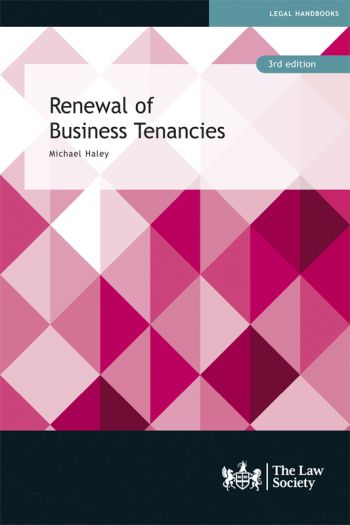Renewal of Business Tenancies: A Practical Guide 3rd ed
ISBN13: 9781784461881
Published: February 2022
Publisher: Law Society Publishing
Country of Publication: UK
Format: Paperback
The renewal of business tenancies is subject to compliance with strict legal requirements including technical statutory procedures, time-limits, and the service of prescribed notices and forms. Accordingly, the operation of the renewal provisions is heavily dependent upon the right person doing the right thing at the right time.
In this book, Michael Haley unravels the complexity of the legal requirements with:
- the background to and policy and catchment of the 1954 Act
- an explanation of the provisions for contracting out
- a clear statement of the rights and obligations of the parties
- guidance on the intricacies and pitfalls of the renewal procedure
- consideration of the interim rent scheme, and
- an account of the discretionary and mandatory grounds of opposition
This third edition has been fully updated to include changes to the 1954 Act brought about by the Covid Code, MEES, the RICS Code of Practice, the Pubs Code, the Telecommunications Code and the treatment of home businesses.
The book also examines new reported case law including:
- Anixter v. Secretary of State for Transport (2020) (the relationship between the contractual and continuation tenancy);
- Vodafone Limited v. Hanover Capital Limited (2021) (the interaction between the Act and the Telecommunications Code; and s.34 rental valuation)
- Kent v. Guest (2021)(contracting out and s.30(1)(f), and
- TFS Stores Ltd v. The Designer Retail Outlet Centres (2020) (agents and contracting out)
A variety of equally up to date and unreported cases are also analysed including:
- WH Smith Retail Holdings Ltd v. Commerz Real Investmentgesellschaft MBH (2021)(rent suspension clause and the pandemic)
- Zash Properties Ltd v. Mayworth Ltd (2020) (effect of residential conversion), and
- the county court return of S Franses Ltd v. The Cavendish Hotel (London) Ltd (2021)(interim rent and new terms)
Further commentary embraces additional developments brought about by case law since the last edition in 2013.
